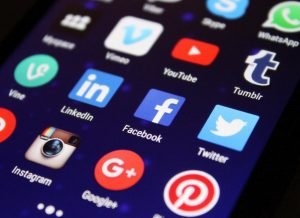
Four Trends Shaping Education Content
By Norrizan Razali | K 12
Robust technology innovation has a profound impact on how people access information and generate knowledge. User patterns of accessing information and generating knowledge are important considerations for content development. Here are a few summary points on how trends in access to content, preferred features, integration of emerging technologies, and social media are shaping education content and impacting pedagogy in the context of K 12.
Access
Smartphones will only get smarter. Smarter capabilities are now extended to in-built high-quality camera lenses, mobile apps that aid productivity, video-streaming as well as connectivity that enable millions to stay connected while on the go. Today the smartphones clearly serve as minicomputers. However, there is still an ongoing debate about the suitability of smartphones for classroom use. The fact remains that children do have access to smartphones outside of schools to do many learning activities. Parents too are increasingly looking out for appropriate content to support their children's learning activities. With teachers accustomed to the convenience of accessing content on their mobile devices, content designed for mobile access will continue to be predominant.

Preferred Features
Easy access to a plethora of content has shaped users' behavior. Users now have a wide choice of content which is commonly visual, animated, and short. Similarly, attention-grabbing and short content will be the choice for learning. Like other users, teachers, and especially students, who are digital natives, tend to lose interest in content that is longer than three minutes. To grab students' attention, content has to be visual-rich, snappy, granular and modular. A visual-rich content of a topic on the respiratory system, for instance, that is 10-minute long will still pose a challenge for teachers to retain students' attention. The same content, for example, can be broken into 5 pieces of an average 2-minute visual-rich content that allows teachers to choose and infuse into their lessons as bursts of learning activities. Teachers know their students best. They should have the flexibility to select modules for their learning activities where they deem suitable.
Integration of Emerging Technologies
The ever increasingly powerful camera on the phone integrated with augmented reality (AR) technology enables users, to get an information overlay "live" as it is pointed at a specific location. Content featuring AR boosts learning as learners tend to retain information conveyed visually. Content integrating AR technology should be developed to support specific learning objectives such as applying the concepts of measurement and angles in Maths. As more teachers become increasingly familiar with the value of AR, it will be a common feature in education content.
Artificial Intelligence technologies such as big data, machine learning, and autonomous decision-making are all characteristics of AI which can enable content creators to make the most of data and create content that connects with an audience in a deeper way. AI will bring personalization of content to the next level, pose a new way of content delivery and very likely transform education at a pace like never before.

Social Media
Popular social media features such as instant communication, collaboration and sharing have made the integration of social media a necessity on many content delivery platforms such as content management systems (CMS) or learning management systems (LMS). Most CMSs and LMSs these days come with built-in social media integration and this drives instant interaction between the users and the system. The system strengthens teachers and students' participation and makes collaboration on team projects easier. Teachers and students would want to communicate with others, collaborate on activities related to the content and share their experience and outcomes. It is advantageous for content to be on CMSs and LMSs that have instant chat functions, video, forums to share information and other lesson resources to support students and teachers.
Good Content Alone
Doesn't Make Good Teachers
Pedagogical innovation with digital content cannot be expected to take place if teachers do not realize the value that technology can bring to their teaching and students' learning. The dynamic nature of digital content highlights the continuous requirements for teacher professional development.



